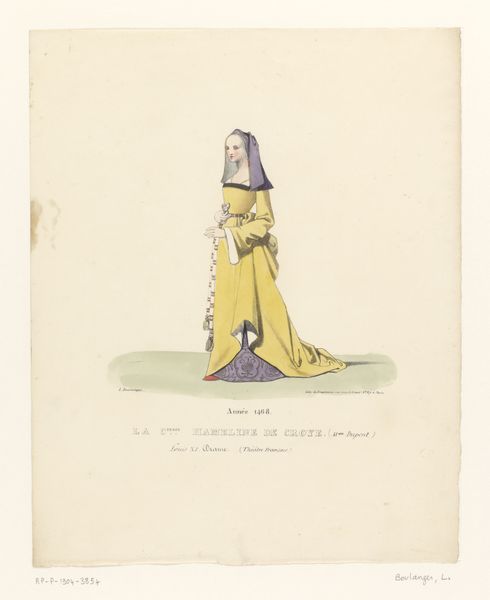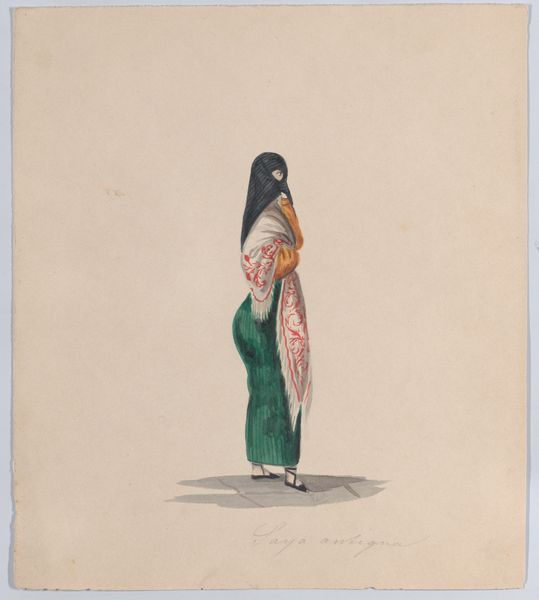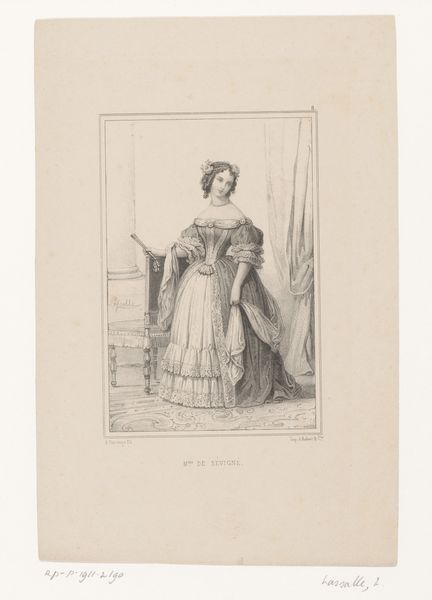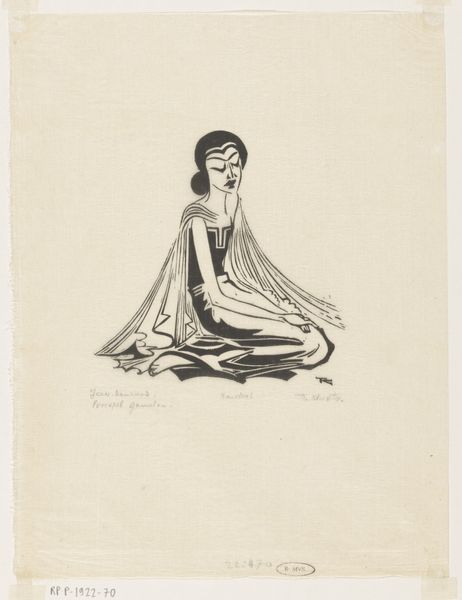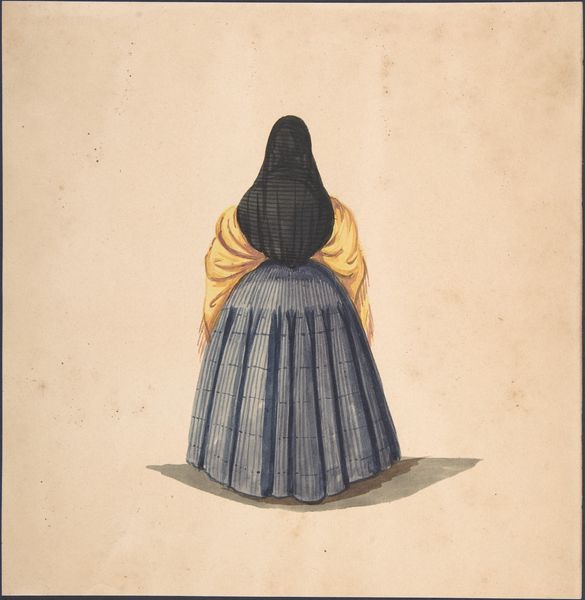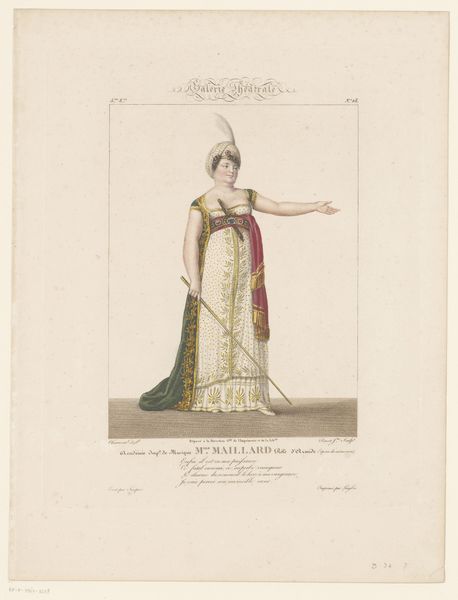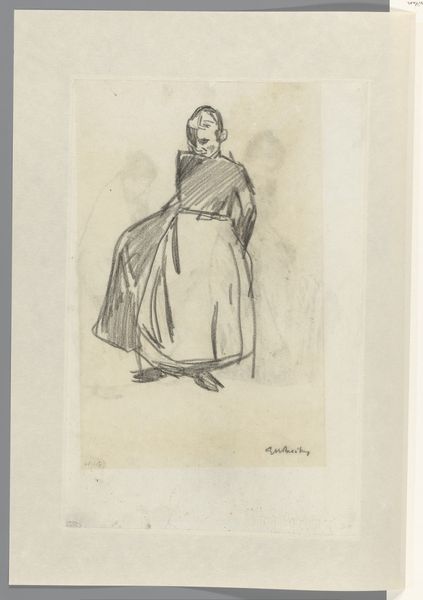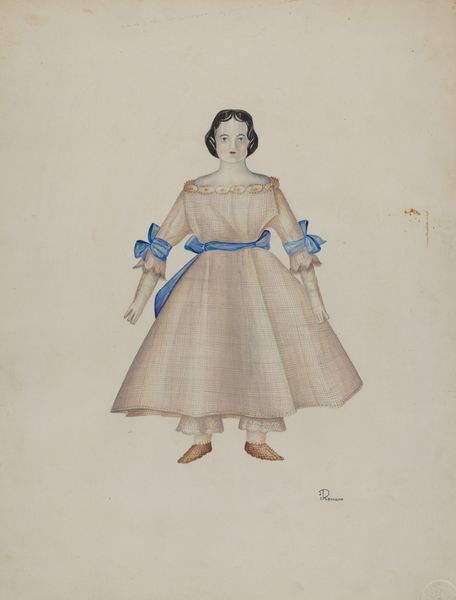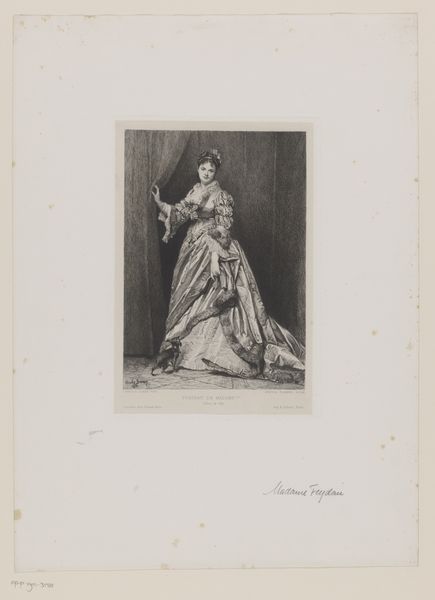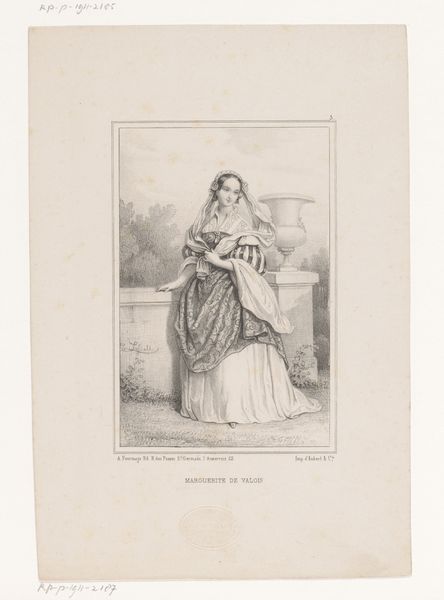
Kostuum van de gravin Isabelle de Croye uit het drama Louis XI à Péronne 1826
0:00
0:00
louisboulanger
Rijksmuseum
drawing, watercolor
#
portrait
#
drawing
#
figuration
#
watercolor
#
romanticism
#
watercolour illustration
#
history-painting
#
academic-art
#
miniature
#
watercolor
Dimensions: height 344 mm, width 275 mm
Copyright: Rijks Museum: Open Domain
Curator: Here we have Louis Boulanger’s "Kostuum van de gravin Isabelle de Croye uit het drama Louis XI à Péronne," a watercolor drawing dating from 1826, part of the Rijksmuseum collection. It's a striking depiction of a costume design. What are your initial thoughts? Editor: The thing that immediately grabs me is the precision of the detail combined with the delicate wash of watercolor. The textures in the fabric – you can almost feel the weight of the materials. Curator: Absolutely, Boulanger meticulously renders the Countess Isabelle's attire. This drawing serves as a historical record, illustrating the Romantic era's fascination with medieval aesthetics and theatrical representation. It highlights the Costume design’s critical role in shaping stage characters. Editor: Indeed, and it begs the question: what fabrics were realistically available? Were these vibrant blues and yellows actually achievable with 19th-century dyeing techniques? Thinking about the labor and the cost involved really anchors it in its time. Curator: Good point. This connects with the broader societal trend of the era. Theatre and the visual arts gained prominence as cultural arenas that fueled national identity and romantic ideals. Notice how costume design served both artistic and narrative functions. Boulanger's illustration participates in elevating theater to a cultural symbol. Editor: Right. It’s easy to get lost in the artistry but thinking about the social lives of these objects matters. The paper, the pigments, even the techniques of watercolor painting – they're all products of a particular time and place. It emphasizes not only the craftsmanship, but how such crafts reflect particular technological advancements or societal pressures. Curator: Considering its placement in the Rijksmuseum adds another layer to it. Museums serve as key institutions in shaping historical memory and visual culture. So, pieces like this one contributes to how the public engages with history. Editor: Exactly. It's a useful reminder that art is not produced in a vacuum. Each of these components bears social and economic relationships embedded within them. It encourages us to think about not just what the artist created, but the systems that allowed for that creation. Curator: Examining the social life of images can shift one's perspective, which is precisely what this Boulanger watercolor accomplishes. Editor: It has given me pause, reminding us of how even seemingly simple artwork operates in a web of complex material and cultural circumstances.
Comments
No comments
Be the first to comment and join the conversation on the ultimate creative platform.
